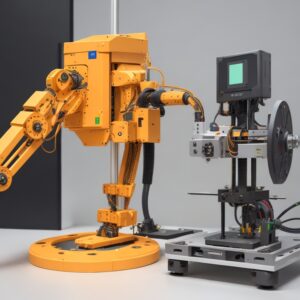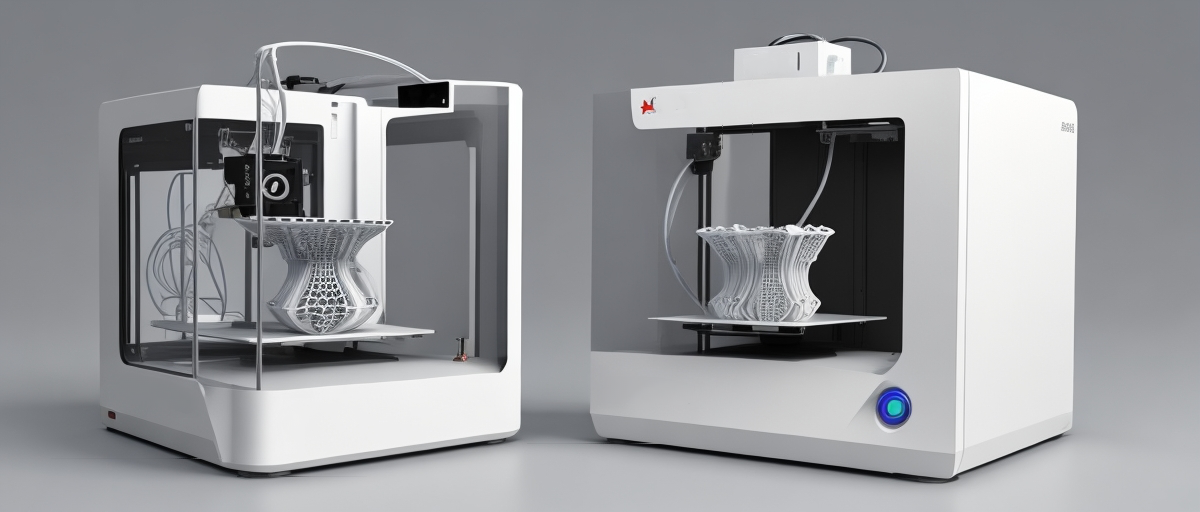 The introduction of 3D printing to the field of robotics has been nothing short of revolutionary, particularly in the area of prototyping. This transformation is deeply rooted in the unique capabilities that 3D printing brings to the table, fundamentally changing the way robotic prototypes are developed.
The introduction of 3D printing to the field of robotics has been nothing short of revolutionary, particularly in the area of prototyping. This transformation is deeply rooted in the unique capabilities that 3D printing brings to the table, fundamentally changing the way robotic prototypes are developed.
Before the advent of 3D printing, creating a prototype for a robotic component was often a lengthy and costly process. Traditional manufacturing methods like CNC machining and injection molding required significant time for setup, machining, and even the creation of specific tools or molds for each new design. This lengthened the development cycle and added substantial costs, particularly for one-off designs or small batch production.
With 3D printing, these constraints have been largely eliminated. Now, designers and engineers can directly translate their digital designs into physical parts with a level of speed and cost-efficiency that was previously unattainable. This ability to rapidly produce prototypes means that ideas can be tested and refined in a fraction of the time it used to take. For example, a design iteration that might have taken weeks or months in the past can now be accomplished in days, or even hours.
This accelerated prototyping process has had a profound impact on the research and development of robotics. It allows for a more agile and experimental approach to design, encouraging innovation and creativity. Engineers can quickly explore a wider range of ideas, testing different configurations and designs to see what works best. This trial-and-error process, which was once prohibitively expensive and time-consuming, is now a practical and integral part of robotic development.
The agility afforded by 3D printing in prototyping extends beyond mere speed and cost. It has opened the door to more complex and intricate designs that would be difficult or impossible to realize with traditional manufacturing techniques. The precision and versatility of 3D printing enable the creation of parts with complex geometries, internal structures, and intricate details without the need for additional tooling. This is particularly important in robotics, where the functionality and efficiency of a robot can be significantly enhanced by the optimization of its parts.
The revolution in prototyping through 3D printing has also made robotics more accessible. Smaller companies, startups, and educational institutions, which may not have the resources for traditional manufacturing setups, can now participate in robotic development. This democratization of access fosters a more diverse and vibrant robotics community and accelerates the pace of innovation in the field.
The impact of 3D printing on robotic prototyping is also evident in the customization of robots for specific applications. Its tailor-made robotic arms for industrial applications, customized drones for aerial surveys, or unique robotic tools for medical procedures, 3D printing enables the creation of robots that are precisely tailored to their intended use.
Cost Reduction and Accessibility
The integration of 3D printing into robotics has been a major driving force in reducing costs and enhancing accessibility, fundamentally altering the landscape of robotic development.
The field of robotics was often seen as the domain of well-funded corporations and large research institutions. The high costs associated with traditional manufacturing methods, such as machining, molding, or casting, were significant barriers to entry. These processes required substantial initial investment in equipment and the expertise to operate and maintain them. The costs of material wastage, tooling, and the need for large production runs to achieve economies of scale further contributed to the exclusivity of robotic development.
3D printing has changed this narrative by reducing the financial barriers associated with robotic fabrication. The technology allows for the creation of complex parts without the need for expensive tooling or molds, significantly reducing setup and production costs. 3D printing is more material-efficient, as it adds material layer by layer to create an object, thereby minimizing waste.
For small businesses and startups, this cost reduction has been transformative. It means that they can now prototype and produce robotic components at a fraction of the traditional cost, allowing them to compete in an industry that was once dominated by large players. This has led to a surge in innovation, as more companies can afford to experiment with novel designs and applications in robotics.
The ease of use and the availability of desktop 3D printers have opened the field to non-professionals and hobbyists. Now, individuals with basic training can design and print their robotic components. Online communities and open-source platforms have further facilitated this trend by providing a wealth of knowledge and resources, making it easier for anyone interested to get involved in robotics.
3D printing has enabled researchers to push the boundaries of what’s possible in robotic technology. Universities and research labs, which may not have large budgets for equipment, can utilize 3D printing to develop sophisticated robotic systems for their studies. This accessibility is important for educational purposes, as it allows students to engage in hands-on learning and research, fostering the next generation of roboticists.
The democratization of robotics through 3D printing is also evident in niche markets and specialized applications. Custom robotics, which are tailored for specific tasks or industries, can be developed cost-effectively. This has implications for a range of sectors, from healthcare, where custom robotic prosthetics can be made, to environmental research, where specialized robots can be developed for unique study conditions.
Material Advancements
The evolution of materials used in 3D printing has been a critical factor in expanding the capabilities and applications of robotics. Initially limited to a few types of plastics, the range of materials available for 3D printing has grown exponentially, enhancing the functionality and durability of robots.
Early stages of 3D printing in robotics predominantly utilized materials like ABS (Acrylonitrile Butadiene Styrene) and PLA (Polylactic Acid), which, while useful for prototyping, often lacked the strength and durability required for functional robotic components. These materials were prone to warping, had limited thermal resistance, and could degrade over time, making them unsuitable for robots intended for long-term use or for operation in challenging environments.
The introduction of advanced materials has dramatically changed this scenario. Materials such as Nylon, PETG (Polyethylene Terephthalate Glycol), and various composites have opened up new possibilities in terms of strength, flexibility, and durability. For instance, Nylon is known for its toughness and resistance to abrasion, making it ideal for parts that require a high degree of durability. PETG, on the other hand, offers a good balance of strength, clarity, and chemical resistance.
The development of composite materials, which combine plastics with reinforcements like carbon fiber, glass fiber, or Kevlar, has been particularly impactful. These composite materials have higher strength-to-weight ratios, making them ideal for robotic applications where weight is a critical factor. Robots constructed with these materials can be lighter, faster, and more energy-efficient, while still maintaining structural integrity.
Another advancement has been in the field of metal 3D printing. Technologies like Direct Metal Laser Sintering (DMLS) and Electron Beam Melting (EBM) have made it possible to print with metals such as titanium, stainless steel, and aluminum. These materials are important for high-performance robotics, in sectors like aerospace, automotive, and defense, where the properties of metal (such as high strength, thermal resistance, and electrical conductivity) are often essential.
The ongoing research in material science promises more advanced materials in the future. For example, research into materials with self-healing properties could lead to robots that can repair themselves after sustaining damage. The development of materials with programmable shapes or properties (such as temperature-responsive polymers) could pave the way for robots that adapt to their environment in real-time.
Advancements in biocompatible materials are opening up new avenues in medical robotics. These materials can be used to create surgical robots or robotic implants that are safe for use inside the human body, potentially revolutionizing various medical procedures.

